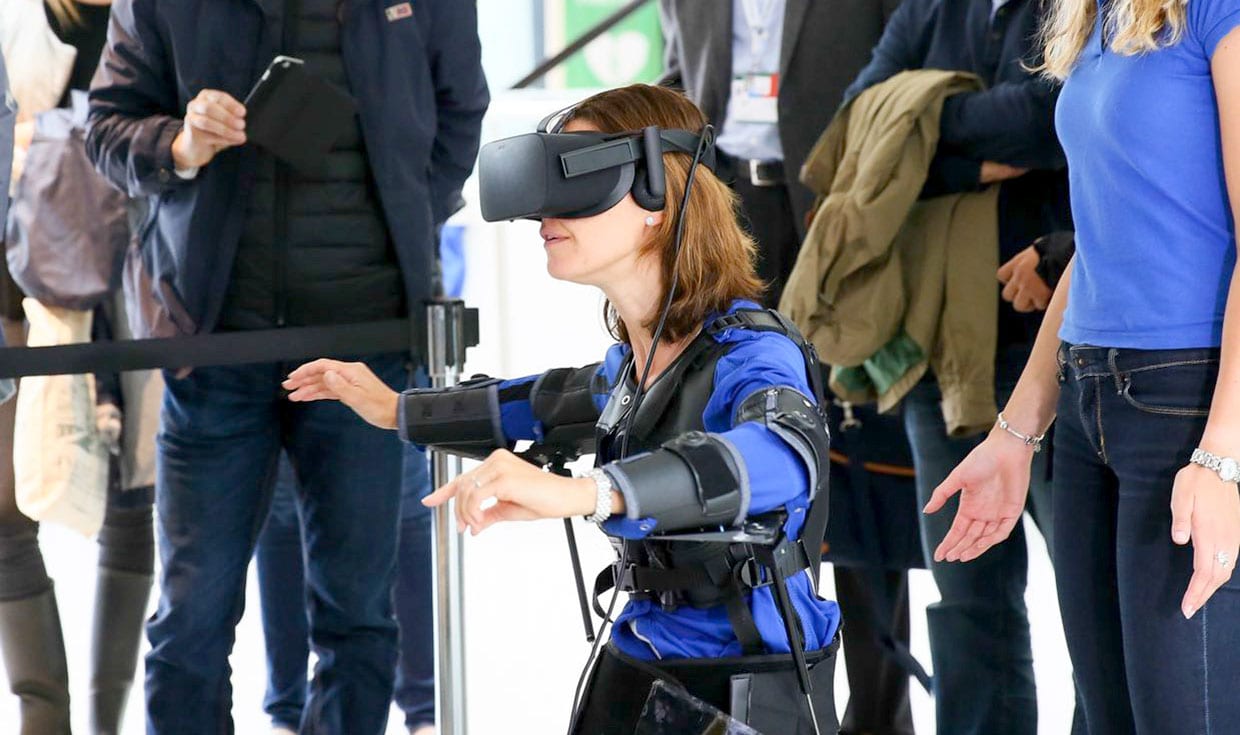News
EPFL’s FlyJacket Lets You Control a Drone and Fly Like an Eagle
Drones are not exactly the easiest devices to learn how to control, but a group of researchers have let their imagination take flight to create a ‘FlyJacket’ that makes the experience more intuitive.
FlyJacket is an exoskeleton suit that allows the user to control drones by moving their wings – much like a soaring eagle on the wing.
The idea has come out of the amazing brains at Switzerland’s École Polytechnique Fédérale de Lausanne (EPFL), led by Professor Dario Floreano, and is the latest concept to combine flying devices with virtual reality.
Thanks to drones, people now have the ability to view spectacular vistas that otherwise would never have been possible, or capturing footage and images of places that are otherwise inaccessible. However, we have to do all that from a distance.
The control of a drone is always done remotely, either with a controller or with an app that allows the user to control the drone via a mobile device. Using such controls is much like playing an immersive video game – but with FlyJacket, the laboratories of EPFL take the user’s experience to another level.
“The idea was to go further than just improving the interaction by achieving an embodiment of the human in the drone. To do so, we wanted a device that is directly mounted on the skin and close to an object of the everyday life,” Carine Rognon, a member of the EPFL team, told IEEE Spectrum.
Wearing the FlyJacket, a soft, comfortable suit fitted with motion-tracking technology, the user is able to pitch and lean as if they were flying in the sky themselves.
As can be seen in the video released by EPFL, the user stretches their arms out, moving their body in the desired direction.
The system translates those movements into commands, transmitting these to the drone. The device is able to detect the pitch of the torso, moving forward and backward; and the user can also twist their body left or right to rotate the drone sideways. According to the researchers, this translates into a more intuitive control than with traditional control controls.
Integrated with FPV (first person view) goggles, and a controller integrated in a glove, the user is able to turn their gaze to an interesting point on a map, and mark it using hand gestures. With the ‘smart glove’, gestures can also be for automated actions, such as commanding the drone to takeoff or the return to its original position.
While it does seem that the FlyJacket willbe able to offer a more intuitive way to control a drone, the researchers do recognise that humans are not in fact eagles, and as such holding arms out for any length of time results in muscle fatigue.
To combat this, they introduced an arm support. Participants testing the FlyJacket reported less fatigue using the support, and their performance in controlling the drone was more consistent.
Overall, the participants reported that the experience was immersive and did indeed create the sensation of flying. However speed control is still an issue.
Visitors enjoy @EPFL_en FlyJacket prototype at London @ScienceMuseum https://t.co/SkaSTjHjld via @thedrive @newscientist pic.twitter.com/stklRfkbig
— Dario Floreano (@DFloreano) June 16, 2017
For now the FlyJacket is not available for retail but its creators see potential.
“The design of the jacket was focused on keeping the material and technologies at low price to have an affordable product. In addition, it is small enough to fit into a backpack in order to be taken in the field and adaptable to many morphologies so many body types can use the same jacket,” Rognon said.
Rognon says the team is still working on improvements, including adding a better degree of freedom to the body’s movement when wearing the exoskeleton.
While it can currently only be used to fly a fixed wing drone, they are also looking into ways to integrate an intuitive speed control, and controlling yaw to allow quadcopter control.
They also hope to integrate haptic feedback in order to create a bidirectional communication between the drone and the user, which they think would accelerate the learning curve to use the jacket.
“In our last study, we have added haptic guidance by the use of cables in order to improve the flight performance,” Rognon added.
The FlyJacket is part of a larger project underway at EPFL, known as “The Symbiotic Drone”. Talking to IEEE Spectrum, Floreano said the project is “aimed at developing technologies that could create a symbiosis between a human and a non-anthropomorphic robot.”
He says the idea was conceived during sabbatical leave while reading about dreams of flight.
The concept is certain to ignite the dreams of many – for now though, we will have to be content with our imagination, and keep posting on future developments!



















